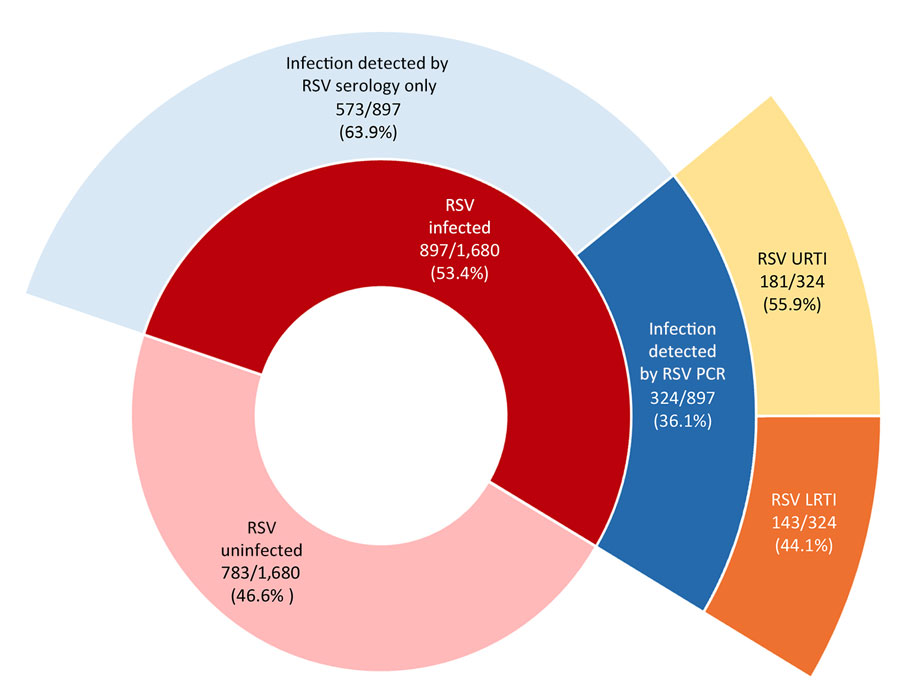Volume 30, Number 10—October 2024
Research Letter
Respiratory Syncytial Virus Prevalence and Risk Factors among Healthy Term Infants, United States
Figure 1

Figure 1. Percentages of RSV infection, symptomatic disease, LRTI, and URTI in the first year of life among healthy term infants, United States. Each ring represents the subset of the inner ring and adds to 100%. LRTI, lower respiratory tract infection; RSV, respiratory syncytial virus; URTI, upper respiratory tract infections.
Page created: September 05, 2024
Page updated: September 24, 2024
Page reviewed: September 24, 2024
The conclusions, findings, and opinions expressed by authors contributing to this journal do not necessarily reflect the official position of the U.S. Department of Health and Human Services, the Public Health Service, the Centers for Disease Control and Prevention, or the authors' affiliated institutions. Use of trade names is for identification only and does not imply endorsement by any of the groups named above.